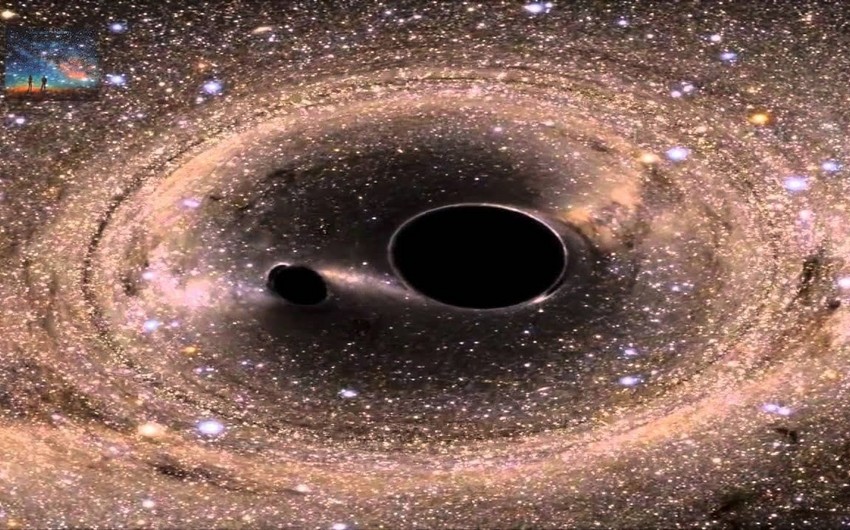In the center of a galaxy 1.2 billion light-years from Earth, astronomers say they have seen signs that two giant black holes, with a combined mass of hundreds of millions of Suns, are gearing up for a cataclysmic merger as soon as 100 days from now.
Report informs, citing Science, that the event, if it happens, would be momentous for astronomy, offering a glimpse of a long-predicted, but never witnessed mechanism for black hole growth. It might also unleash an explosion of light across the electromagnetic spectrum, as well as a surge of gravitational waves and ghostly particles called neutrinos that could reveal intimate details of the collision.
Supermassive black holes are thought to lurk at the heart of most, if not all, galaxies, but theorists don’t know how they grow so big. Some sporadically suck in surrounding material, fiercely heating it and causing the galaxy to shine brightly as a so-called active galactic nucleus (AGN). But the trickle of material may not be enough to account for the black holes’ bulk. They could gain weight more quickly through mergers: After galaxies collide, their central black holes become gravitationally bound and they gradually spiral together.
In data from a survey telescope in California called the Zwicky Transient Facility (ZTF), a team led by Ning Jiang of the University of Science and Technology of China stumbled on a periodic AGN called SDSSJ1430+2303. “My first instinct was it must be related to a pair of supermassive black holes,” Jiang says.
Then, the researchers found something more: a trend they interpret as a binary pair closing in on a merger. The cycles were getting shorter, going from 1 year to 1 month in the space of 3 years. It is “the first official report of decaying periods which reduced over time,” says Youjun Lu, a theoretical astrophysicist at the National Astronomical Observatories of China, who was not part of the team.
If the merger comes to pass, observers could have a field day. “There should be a huge burst across the electromagnetic spectrum, from gamma rays to radio,” Kun says. Some also expect a flood of neutrinos, which the IceCube detector at the South Pole—1 cubic kilometer of polar ice outfitted with light sensors to detect neutrino impacts—could pick up. Neither, however, is certain. Some predict a whimper rather than a bang. “We really don’t know what to expect,” Ransom says.


 https://static.report.az/photo/5bb5c938-261e-3705-98a7-78a0d46a842e.jpg
https://static.report.az/photo/5bb5c938-261e-3705-98a7-78a0d46a842e.jpg

